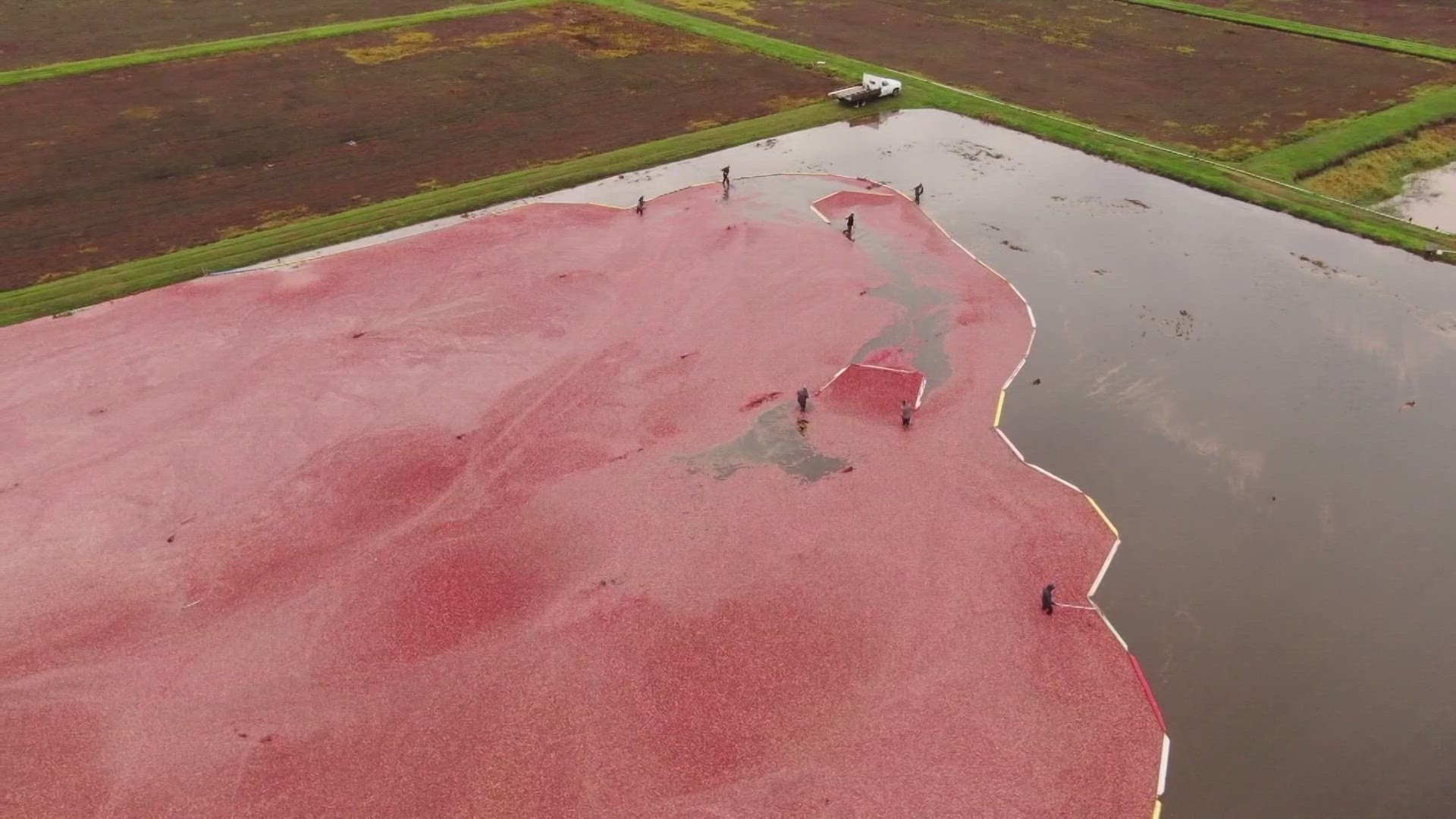LONG BEACH, Wash — Cranberries are a staple of the autumn season for many families. While the East Coast is well-known for its work with cranberries, Washington state is also home to a number of wet and dry harvesters-- many contributing to the products produced by Ocean Spray.
That includes CranMac, a first-generation farm owned and run by Malcolm and Ardell McPhail. KING 5 visited their bogs to learn about the process, the environmental challenges many harvesters face, and the work involved in preserving the tradition for years to come.
HARVEST AT CRANMAC
The McPhails purchased their first farm in 1981, commuting for four years before moving to the bogs full-time. The first bog they purchased - based on what they could afford- needed a lot of work to get the farm producing enough so they could live on the farm and not starve. But they did it -- and became deeply familiar with the steps of wet harvesting.
Cranberries grow through the year- and shortly before harvest, they flood the bogs, pumping water in so cranberries float.
"Then, you run a beater which is a big machine with a reel on it, and it sweeps through and knocks the berries off the vine," Ardell said. "They float, and you add more water so they float and you can move them, and then we bring in boom boards, like an oil slick thing, you surround the berries then move them to an elevator, it goes up into our trucks and we haul them in."
The McPhails say some of their workers have been with them for years, even decades.
"What makes us so proud of our farm is our people," Malcolm said. "They make us successful."
The McPhails say the hardest part of the job is keeping the bogs economically viable. During a year when there is a glut of berries, the prices they'd get can go down. When supply and fuel costs are higher, that presents an added challenge. In addition to the economic challenges are the environmental ones -- especially during dry years.
"We had dry spots show up you never had before and other neighbors had the same problem," Malcolm said. "Plus with lot of strong winds, the sprinklers don't always get back around and the dry spots were unusual this year."
The dry years mean less water in reservoirs and more irrigation needed.
"We may be the luckiest on the peninsula because we have the lake right here that we have water rights on since 1906, so we can pump out of there, but in our other farms and as you move north, they're all just ponds," Ardell said. "So you can only pump so much."
Despite the obstacles, the McPhails say they wouldn't want to be doing anything else -- and they feel a sense of pride in starting their family business from scratch. They now have 93 acres and their son has 23. This year, they had their best crop to date.
"This is the best choice we ever made I think, to come here on the farm and build our life here," Ardell said.
RESEARCH INTO LOCAL ISSUES
Maintaining the cultivation of the crop involves research on the questions local farmers are facing. Laura Kraft, Ph.D. is an extension specialist for Washington State University based in Long Beach. She spent time asking farmers what issues they were facing and found that labor shortages and insect pests were top of mind. Many were interested in a cranberry tapeworm that may be impacting harvests.
"It lays its eggs just in the top of the cranberry upright, the growing part," Kraft said. "So what happens is, what would have been a fruiting the next season, because the tipworm has gone in there and laid its eggs, a new offshoot will grow instead and it will be vegetative, so it could potentially reduce the yield of the cranberry vine."
Kraft also works with collaborators in Oregon, British Columbia, and the East Coast.
"We have had some issues with dry summers, especially last year was a pretty dry summer, and so because we do so much wet harvesting down here, the equipment is different, our growers depend on it," Kraft said. "So last year our reservoirs were down because we had such a dry summer and they had to delay their harvest by 2-3 weeks to be able to flood their bogs."
Kraft says researchers across the coast are examining the impacts of drier, hotter years and what can be done to mitigate them.
"We do see that really dry summers make it harder to do wet harvest," Kraft said. "We've also seen wetter spring seasons- so part of the challenge there is, our growers actually bring in honeybees to help pollinate in the spring, its a really fun time, but unfortunately when its rainy the honey bees aren't able to do their job as successfully, so those wetter springs are really affecting the yield."
WASHINGTON'S LEGACY AND FUTURE
The Pacific Coast Cranberry Research Foundation and its Cranberry Museum and Gift Shop offer a window into cranberry harvests' past, present and future. They offer self-guided tours of bogs, allow people to see harvest, and coordinate events to celebrate the industry. To learn more about the history and future of cranberries in Washington, click here.

